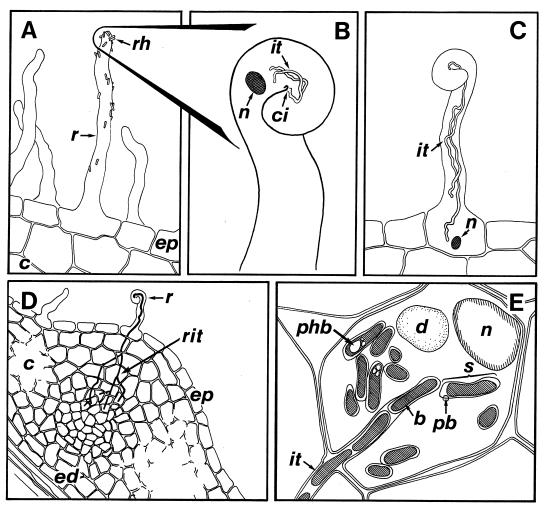FIG. 1.
Invasion of legume root hairs by Rhizobium. (A) Rhizobia (rh) colonize the rhizosphere and attach to the root hairs (r). (B) Opening the “outer door.” Nod factors induce root hair curling and permit bacterial penetration at the center of infection (ci). The plant nucleus (n) precedes the growing infection thread(s) (it). (C) Crossing the inner doors. Still accompanied by the nucleus (n) an elongating infection thread (it) reaches the base of the root hair cell. (D) A developing infection thread ramifies (rit) near the nodule primordia formed by dividing cortical cells. (E) Bacteroids (b) are released from the infection thread (it) and form symbiosomes (s) in nodule cells. Granules of poly-β-hydroxybutarate (phb) accumulate in bacteroids surrounded by the peribacteroid membrane (pb). Other abbreviations: c, cortex; d, digestive vacuole; ep, epidermis; ed, endodermis.

